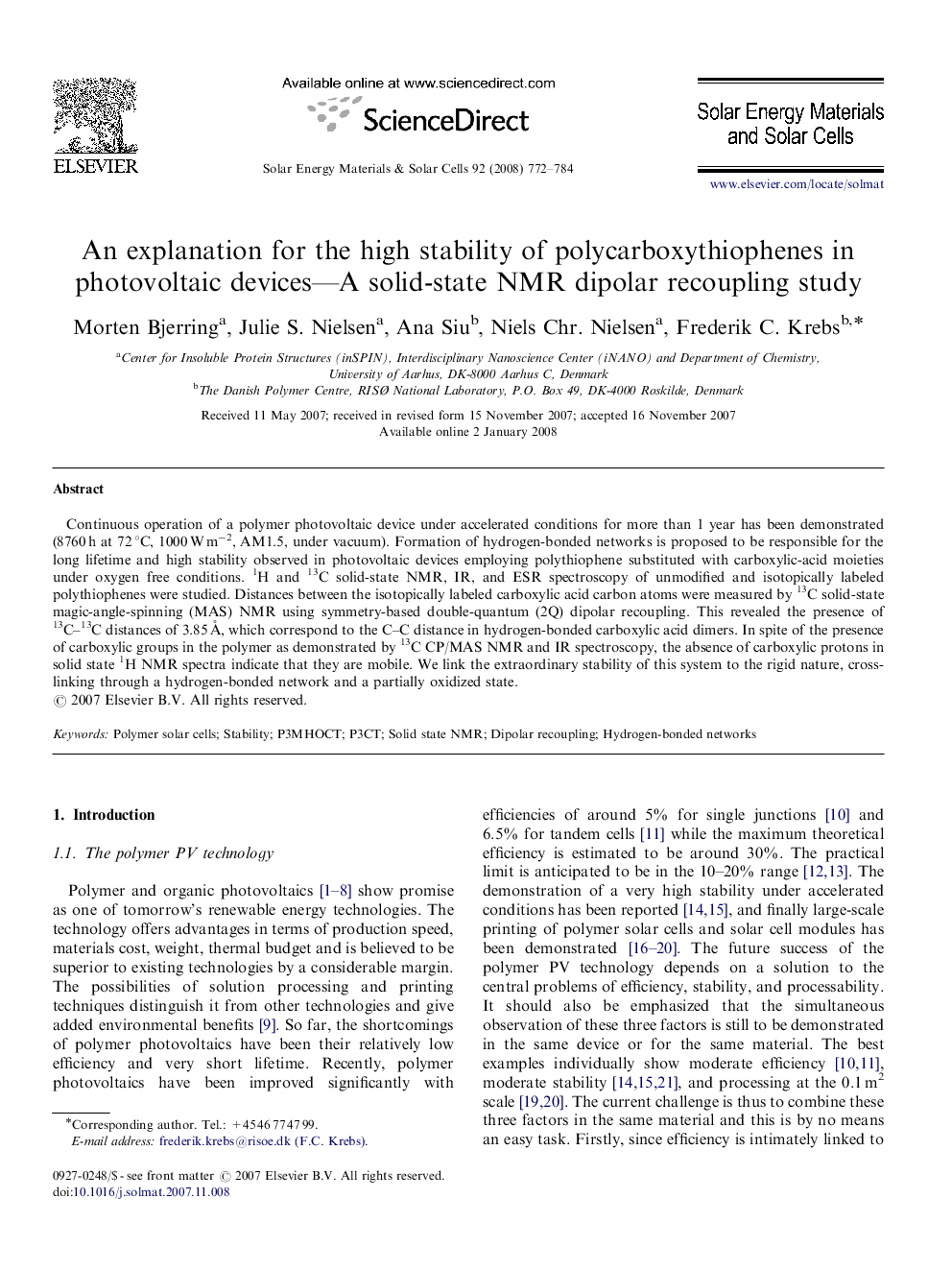| Article ID | Journal | Published Year | Pages | File Type |
|---|---|---|---|---|
| 80643 | Solar Energy Materials and Solar Cells | 2008 | 13 Pages |
Continuous operation of a polymer photovoltaic device under accelerated conditions for more than 1 year has been demonstrated (8760 h at 72 °C, 1000 W m−2, AM1.5, under vacuum). Formation of hydrogen-bonded networks is proposed to be responsible for the long lifetime and high stability observed in photovoltaic devices employing polythiophene substituted with carboxylic-acid moieties under oxygen free conditions. 1H and 13C solid-state NMR, IR, and ESR spectroscopy of unmodified and isotopically labeled polythiophenes were studied. Distances between the isotopically labeled carboxylic acid carbon atoms were measured by 13C solid-state magic-angle-spinning (MAS) NMR using symmetry-based double-quantum (2Q) dipolar recoupling. This revealed the presence of 13C–13C distances of 3.85 Å, which correspond to the C–C distance in hydrogen-bonded carboxylic acid dimers. In spite of the presence of carboxylic groups in the polymer as demonstrated by 13C CP/MAS NMR and IR spectroscopy, the absence of carboxylic protons in solid state 1H NMR spectra indicate that they are mobile. We link the extraordinary stability of this system to the rigid nature, cross-linking through a hydrogen-bonded network and a partially oxidized state.
